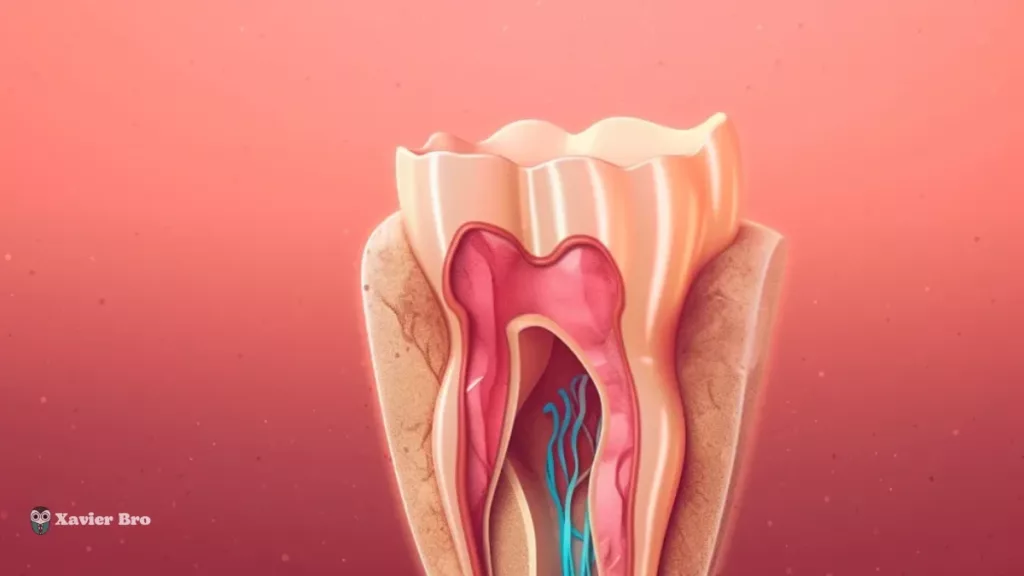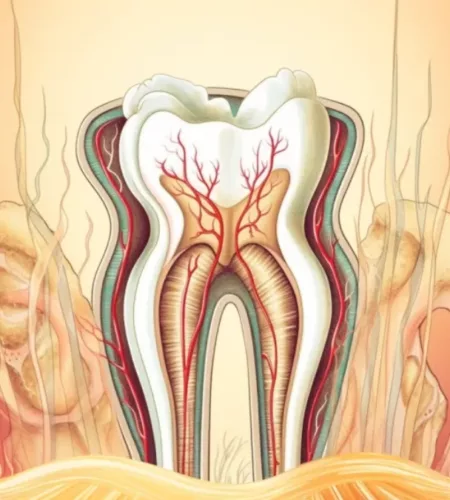Suffering from the pain of the tooth is on the next level. You cannot delay the treatment as it is linked to your survival. A root canal is a process for treating an infected tooth. In this process, you’re not bringing the tooth back but preserving its form. The root canal directs to the track within the tooth where the nerve lies. Sometimes, front teeth hurt when eating sweets. At this point, the root canal on the front teeth needs treatment. The dentist or endodontist removes the infection to avoid further damage. Yet, it is both an efficient and cost-effective solution. Let’s explore the top 6 things to know about root canal on front teeth in this article.
Things to Know About Root Canal on Front Teeth
A root canal on front teeth refers to a root canal treatment conducted on a front instead of a back tooth like a molar.
1- Possible Signs and Symptoms
In a few cases, the patient may not know he has an infected tooth. Yet, many people catch clear signs. The main sign includes toothache that doesn’t go away. If your pain deepens in your tooth, you require root canal therapy. Discomfort may even radiate towards the jaw, face, or other teeth. If your tooth aches when you sip hot coffee or ice cream, it may be due to sensitivity.
When a tooth is infected, pus can pile in the space, leading to bloated or swollen gums. Some patients develop a pimple on the gums. Pus from the infected teeth drains from the pimple, causing an unpleasant smell. An infected tooth may feel looser. Tooth discoloration and chipped or cracked teeth are also some of the symptoms.
2- Root Canal as a safe procedure
The procedure of the tooth canal at the front teeth is entirely safe. Root canals are typical techniques that are well-established and confirmed to be very efficient. The dentist conducts an average of twenty-five root canals a week.
It will assure you that the process you will also go through is safe. This treatment is secure and painless despite any fake statements you have heard. It is a low-cost treatment that resembles other methods of dealing with an infected or failing tooth.
3- Pain to endure during the procedure
The tooth pain you feel periodically is from the infection in the front tooth. The soundest part of a root canal is that you won’t have any more pain when it’s treated well. It is usually initiated with local anesthesia, so there is no discomfort. However, when the effect of anesthesia vanishes, it’s common to have some pain.

However, the doctor usually prescribes some painkillers to offset temporary soreness. Another perspective of the therapy is that the most challenging part of a root canal practice is keeping your mouth open for the entire time. You can contact the healthcare consultant immediately if you are experiencing severe pain after the treatment.
4- Preparation for the treatment
Before initiating your root canal, you can inquire about the complete process with your dentist. There are things you need to be prepared for root canal therapy. Firstly, take all medicines as prescribed. The doctor may give you an antibiotic or anti-inflammatory pill a few days before the appointment, mainly if there is a pile of infection.
The tobacco derivatives inhibit the body’s capability to recover itself. So, avoid smoking many days before the appointment. Moreover, eat a healthy meal. Eat before your treatment since the anesthesia used in the root canal therapy will numb the mouth for hours.
5- Steps of a complete process
Before initiating your root canal, your dentist will take dental X-rays of the front tooth. It helps specify the extent of damage and confirms that root canal therapy is suitable. Some steps need to be followed for the entire process. First, anesthesia numbs the infected tooth and the gums. The doctor may suggest sedation if you struggle with dental stress. Then, a small rubber dam is set over the area, keeping it dry.
Tiny dental tools extract the nerves, blood vessels, and tissues in the tooth. Further, the root canals are cleansed, disinfected, and shaped. The empty canals are filled with a loose, elastic dental material. Sealing the tooth is the next step. A quick dental filling will seal the tooth and stop bacteria from re-entering and placing the final restoration.
You’ll need a dental crown to shield the treated tooth and reform the bite. The crowns are custom-made, and fabrication lasts two to three weeks. When the crown is prepared, the temporary filling is released. The permanent crown is placed during the same appointment.
6- Risks and Benefits
There are countless edges to selecting root canal therapy. This therapy can control infection from flaring to other teeth. It relieves the signs associated with an infected tooth and reduces the chance of jawbone injury. Yet, it eradicates the need for tooth extraction. So, it is considered a secure and effective method. It boasts up to 98% success rates.
On the other hand, complications can occur in different patients. It is specifically true if your tooth is too impaired for this type of therapy. Failed root canal signs are ache, swollen gums, pus, tooth discoloration, pimples on the gums, and sinus issues.
Conclusion
Sometimes, bacteria penetrate the pulp of a front tooth and induce an infection. It may lead to a root canal on the front teeth. The infected pulp is extracted, filling the tooth to prevent reinfection. This dental practice reduces pain induced by an infected or abscessed tooth. During the root canal, the tooth surfaces are washed and disinfected. A filling is put to seal the space. Yet, this therapy is crucial when oral bacteria intrude on the pulp inside your tooth.
FAQs on Root Canal on Front Teeth
What are the options for root canal treatments?
The only choice for this therapy is tooth displacement. Even though it’s soundest to preserve natural teeth, extraction is essential for oral health. Yet, it can be replaced with a dental implant, bridge, or partial.
In how much time does the root canal recover?
Commonly, a root canal on front teeth healing takes less than a week. Mild pain may be present on a rare day, but medicine can handle this. Call your dentist if you have intense pain or pain that lasts longer than a week.
I hope you enjoy our article. Do check out more of our amazing articles.
